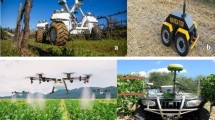Abstract
Real-Time Kinematic (RTK) positioning is a precise positioning method, which is expected to support self-driving. However, it is known that the availability of RTK highly depends on the Global Navigation Satellite System (GNSS) signal environment, which is influenced by buildings and viaduct of tunnel. Before driving, it is convenience if we can simulate the GNSS signal environment using a three-dimensional (3D) map and predict the availability of RTK. It is also important to know the limitation of RTK for other sensors. Therefore, we predicted it using machine learning based on the past test-driving and simulated signal environment datasets. The prediction accuracy was almost 65–80% from two evaluation tests in Tokyo and we found several new issues to consider for RTK availability prediction.
























Similar content being viewed by others
References
Dixon, R., Bobye, M., Kruger, B., Jacox, J.: GNSS/INS sensor fusion with on-board vehicle sensors. In: Proceedings of the 33rd International Technical Meeting of the Satellite Division of The Institute of Navigation (ION GNSS+ 2020), 424–446 (2020)
Furukawa, R., Kubo, N.: Prediction of fixing of RTK-GNSS positioning in multipath environment using radiowave propagation simulation. Journal of the Institute of Positioning Navigation and Timing of Japan 10(2), 13–22 (2019)
Plateau.: Plateau View App. https://www.mlit.go.jp/plateau/app/ (n.d.)
ublox.: ZED-F9 Integration Manual. https://content.u-blox.com/sites/default/files/ZEDF9P_IntegrationManual_UBX-18010802.pdf (n.d.)
Beckmann, M., Ebecken, N.F.F., Pires de Lima, B.S.L.: A KNN undersampling approach for data balancing. J. Intell. Learn. Syst. Appl. 7(4), 104–116 (2015)
Acknowledgements
This work was supported by JSPS KAKENHI Grant Number JP21J20360.
Author information
Authors and Affiliations
Corresponding author
Ethics declarations
Conflict of Interest
The authors declare that they have no conflicts of interest.
Additional information
Publisher's Note
Springer Nature remains neutral with regard to jurisdictional claims in published maps and institutional affiliations.
Rights and permissions
Springer Nature or its licensor (e.g. a society or other partner) holds exclusive rights to this article under a publishing agreement with the author(s) or other rightsholder(s); author self-archiving of the accepted manuscript version of this article is solely governed by the terms of such publishing agreement and applicable law.
About this article
Cite this article
Kobayashi, K., Kubo, N. Prediction of Real-Time Kinematic Positioning Availability on Road Using 3D Map and Machine Learning. Int. J. ITS Res. 21, 277–292 (2023). https://doi.org/10.1007/s13177-023-00352-6
Received:
Revised:
Accepted:
Published:
Issue Date:
DOI: https://doi.org/10.1007/s13177-023-00352-6




